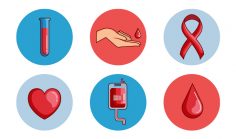Rates of cigarette smoking vary widely, and have changed considerably over the course of history—since cigarettes were first widely used in the mid-20th century. While rates of smoking have over time leveled off or declined in the developed world, they continue to rise in developing nations.
The tobacco that is used in cigarettes, pipes, and cigars contains a highly addictive substance called nicotine, which is readily absorbed into the bloodstream when a tobacco product is chewed, inhaled, or smoked.
Nicotine stimulates the adrenal glands, which release epinephrine or adrenaline, when it enters the bloodstream. When epinephrine is released into the body, it stimulates the central nervous system, increasing heart rate, respiration, and blood pressure. Behaving much like other addictive drugs—think cocaine or heroin—nicotine increases levels of the neurotransmitter dopamine, thus affecting brain pathways that control reward and pleasure.
For many tobacco users, long-term brain changes induced by continued nicotine exposure result in addiction—a condition of compulsive drug seeking and use, even in the face of negative consequences. For many regular tobacco users, brain changes occur from sustained nicotine exposure, which result in addiction. And like other addictions, when you try to quit you may suffer unpleasant withdrawal symptoms, which in the case of nicotine include irritability, headaches, and trouble sleeping. Smoking also causes psychological dependence. This means that you’ve gotten used to smoking, and it’s hard to break the habit of having a cigarette in your hand at certain times.
About half of cigarette smokers die of tobacco-related disease and lose on average 14 years of life.
Every year in the U.S. over 392,000 people die from tobacco-caused disease, making it the leading cause of preventable death. Another 50,000 people die from exposure to secondhand smoke. Tragically, each day thousands of kids still pick up a cigarette for the first time. The cycle of addiction, illness and death continues.
Cigarette use by pregnant women has also been shown to cause birth defects, including low birth weight, fetal abnormalities, and premature birth. Second-hand from cigarettes has been shown to be injurious to bystanders, which has led to legislation that has prohibited smoking in many workplaces and public areas.
To quit smoking successfully, you will need to deal with both physical addiction and psychological dependence.











